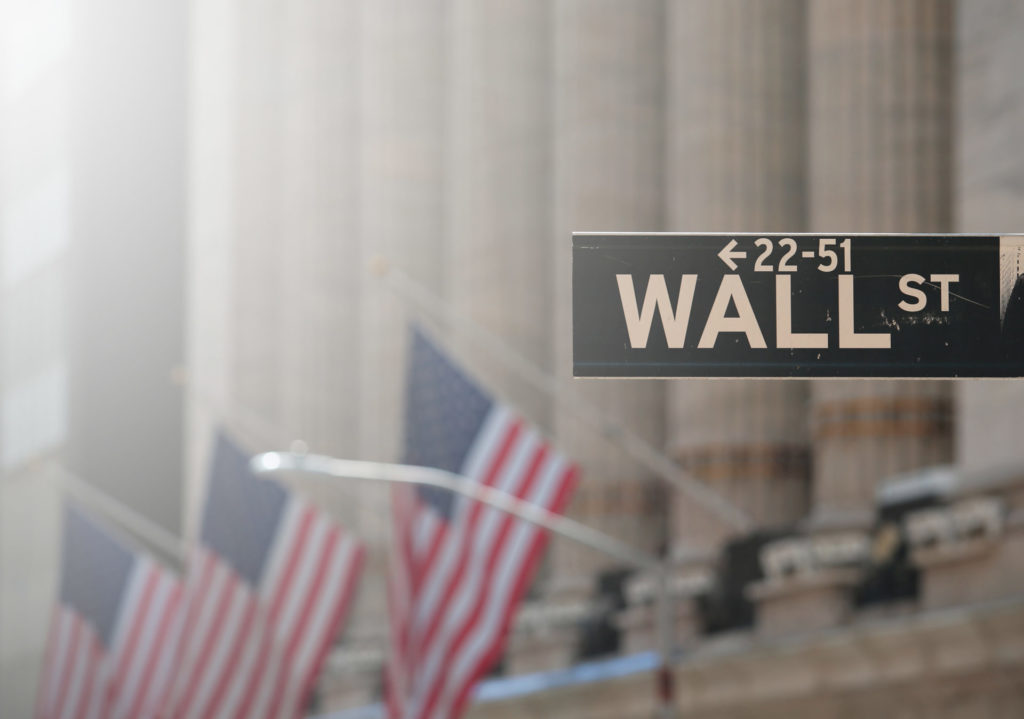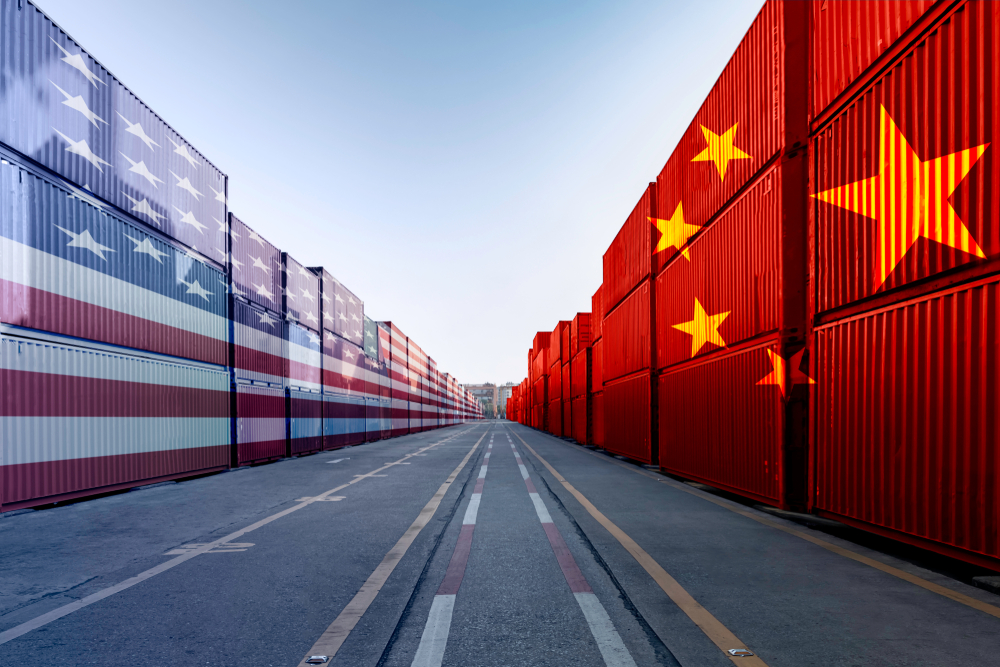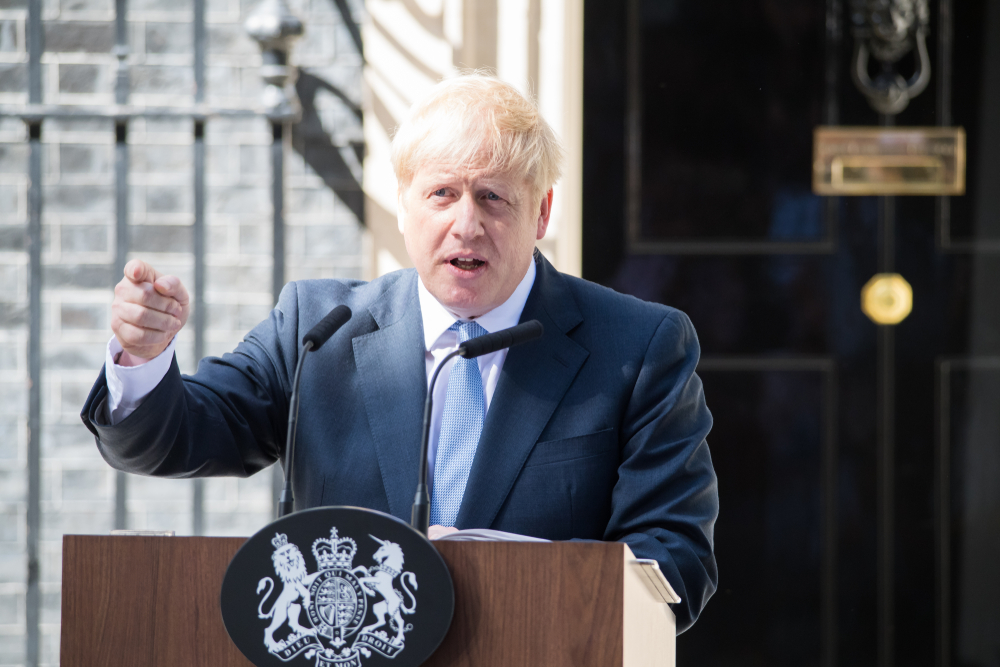If the 2010’s could be characterised as a decade in which markets were driven, predominantly by central bank support for assets i.e. QE, what could the 2020’s bring for investors?
In last year’s review, we opined that trade wars would impact on economic growth, and that has been seen to be the case, particularly for industrial companies. Central banks have reacted quickly, pressing the buttons that they have at their disposable. Given that interest rates had hardy moved off their post crisis lows, except maybe in the US, do they have the ammunition to forestall any threats of a more prolonged downturn?
US
The US economy continues to be led by the consumer. The impact of trade wars on the industrial and technology sectors and the early year move up for bond yields meant, however, that the Fed rapidly reversed up the wagons and the cycle of interest rate rises came to an abrupt end. There was no repetition of the Trump tax cuts of the year before to help support corporates. 2019 has, as now, seen three interest rate cuts as the Fed FOMC commenced a new easing cycle. Trump would have preferred that they followed the lead of say the ECB and moved to negative interest rates, but we are not sure what form of reasoning he is using to come to that conclusion! As 2019 comes to an end, unemployment is at cycle lows at 3.5% with very solid wage inflation of 3.1%, keeping the consumer happy as disposable income continues to grow. This has been helped by the pull back in bond yields in H2 2019 and consumers re-mortgaging at lower rates.

The industrial sectors, led by companies such as Caterpillar, are, like the rest of the world, experiencing subdued demand. China is no longer the engine for global industrial growth and it is hard to see who may take on the baton. Industrial PMI’s have moved down through 2019 to, in many countries, signal contraction. Commentators are attempting to call the turn and that the worst is over. Equity markets have been following the lead and have seen some good bounces in share prices, with quite a number of US industrials trading at 5 year high share prices. A clear example of the equity market attempting to discount the future rather than looking backwards.
2020 is also a US Presidential Election year. As we come to the end of 2019, Trump has been impeached, although this is very unlikely to make it through the US Senate. He is only the third President in US history to face this. Will it make any difference to his attempt to win a second term as President? Unlikely.
The UK Election result may caution the Democrats against being too radical with their policies which could, if that occurs, lead to quite a tight race. Expect Trump to push all the growth buttons he can to try to ensure that the US economy enters the run into the Election in fine fettle. We do need to remember that we are now moving into the 12th year of recovery/growth post the financial crisis. The world needs other regions to take on the growth mantel as well. US equities have loved the re-starting of stimulus and are hitting new all-time highs on a day by day basis, with the S&P up over 2% at time of publication.
We couldn’t finish this section without a final word on the trade wars. It seems like the first phase of a US-China trade deal has been signed about 50 times if you believed every “tweet” and newsfeed! The two parties do appear to have finally moved forward, and that will hopefully bode positively for global growth as we move into 2020. Trump needs a deal to help his chances of re-election. The question is, will the tariffs that have already been imposed be removed? By its very nature, the actions taken to date have already started a re-thinking and moving of manufacturing locations and trade flows. Once started, this is unlikely to stop.
Asia & Europe
Economic growth in China has continued, slowly but surely, to slow through 2019, with bad debt problems rising. Industry is no doubt suffering from the significant changes in trade flows and centres of production driven predominantly by the US attack on China through the mechanism of tariffs. Those SE Asian countries that look to be benefiting from the US actions would include at the top of the list Vietnam, Indonesia and Malaysia. The Bank of China has been attempting to bail out the heavily indebted private sector, but it appears that (at present) there is only so far they are prepared to go.
If there is any sign of the Hong Kong unrest spreading to the Mainland however (i.e. if unemployment started to grow), then you feel that action would rapidly be forthcoming. The major risk to the Chinese planned model is civilian unrest, most likely due to unemployment or squeezed incomes – something that the US administration know all too well.
Japan has announced a new stimulus package to take effect as the impact from the 2020 Olympics wanes. This should also help counter the impact from the rises in consumption tax. The stimulus amounts to Yen13.2 trillion ($120bn) and is the first example of the question that was asked right at the beginning of this review, namely: “what could the 2020’s bring for investors? Could it be fiscal stimulus from governments that becomes the new driver for growth?”

We talked last year of a number of European economies delivering negative growth for Q3, and 2019 has not been much better. German industrial output for October 2019 was -5.3% yoy for example, as the economy suffers from its dependence on global trade and technological change, particularly in the automotive sector where October auto production was -14.4% yoy, with thousands of employees being laid off. France continues to suffer from widespread strike action as Macron attempts to restructure the economy. Despite this, European economies have not entered recession as measured by the traditional means of two consecutive quarters of negative growth.
Germany appear to be flirting with fiscal stimulus under the headline of ‘investment in renewables’, and this looks like a very sensible policy, if we do say so. There is that new theme again. We have had a changing of the guard at the European Central Bank (‘ECB’), with Christine Lagarde from the IMF taking over. Her first meeting saw her being more upbeat that the worst was over in Europe. She has also instigated a strategy review of the ECB. Given her background, it would not be a surprise if she were to encourage European government to do their bit with some fiscal stimuli.
The growth outlook hasn’t stopped equity markets rising though, with most European ones up 25% plus.
UK
Fund flows move markets. Last year we wrote that the removal of UK specific uncertainties had the potential to drive inflows after 2 ½ years of outflows post the Brexit vote in 2016. Unfortunately March passed without any resolution, and it appears that this did cause a step down in UK economic activity with no end date for the Brexit arguments in sight.
After 3 ½ years of dithering, politicians have finally moved to draw a line under the short term uncertainty with the calling of a General Election. The conclusive result means that the Conservative party have been given a clear mandate to govern for the next 5 years and, with an 80 seat majority, they have the scope to make meaningful changes to the direction of UK policy, if they so choose. Uncertainty number one has thus been removed.

The next action point on their agenda will be to complete (whether you agree with it or not) the first stage of Brexit by the end of January 2020. Uncertainty number two removed. There does, though, remain the not small issue of negotiating a free trade agreement with the EU and other countries around the world, so it’s not likely to be all plain sailing. The current EU deadline is December 2020.
With the mandate they have, the direction that policy and thus the influences that this will have on the UK economy, will take time to become clear. The NHS is at the top of Johnson’s agenda, so expect funding there.
Infrastructure, and investment for renewal and in renewables, is also likely to feature high in the agenda. We are going to have to wait for more details. Let’s hope that they plan and legislate wisely and invest to achieve meaningful returns for the economy. With government bond yields where they are, they potentially have a once-in-a-generation opportunity to borrow at ultra low rates to effect this change.
For corporates, the removal of uncertainty means all those projects that have been on hold will now likely see the dust brushed off the files for reassessment. One would hope quite a number will be going ahead, particularly if we are looking at 2020 being a year of accelerating growth for the global economy, especially outside the US.
The initial reaction to the conclusive General Election result, and the important removal of some uncertainty has been, as we would have expected, seen with the domestically exposed mid and small cap indices out-performing the large caps.Let’s finally return to the mantra Flows move Markets. UK assets had already been in demand with M&A buoyant through 2019; with many companies departing the equity market, aided by the lowly level of sterling. Now investors, such as those from overseas, may well have had enough uncertainty removed to at the minimum start, closing their underweight positions in UK equities as we have previously supposed in last year’s piece. That also goes for UK domestic investors, too. I am reminded of when the UK left ERM in 1992. The initial move was equity markets up, then pause, then up and up.
The UK has been lagging the world… is it now time for catch up?
In conclusion, 2019 was characterised by the impact of the US-China trade wars on global trade and industrial demand. In the UK, uncertainty continued for longer than expected as Brexit wranglings went on and on. Looking into 2020, China and Trump appear to be moving forward on trade agreements and this is certainly in Trump’s interest with 2020 being a US Presidential Election year.
In the UK, uncertainty is also being progressively removed and we look for a pick-up in economic activity as the year progresses. Returning to the question at the top of this section on “what could the 2020’s bring for corporates and investors?” ultimately, Government spending i.e. fiscal stimulus, is likely to be a phrase you hear more and more of, particularly in connection with investment in renewables and renewing of infrastructure and economies. Let’s wait to see what 2020 has in store! It’s looking to be an interesting year for global equity markets.
If you would like to discuss this post in more detail, or if you are interested in finding out more information about our services, please email us or call us on +44 (0)20 7496 3000.
[simple-author-box]